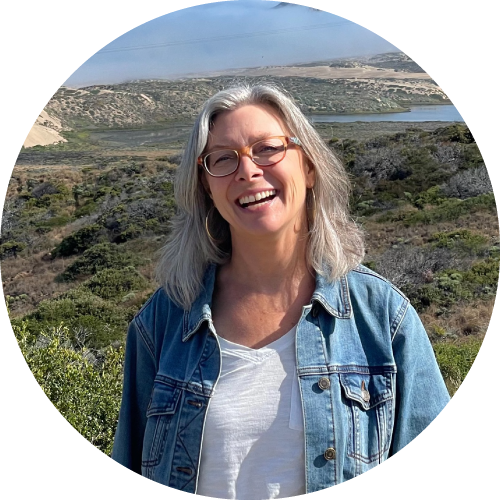LOCATING OURSELVES ON THE TERRITORY OF GRIEF BY DONNA HELETE

Navigating the unfamiliar territory of grief can feel extremely difficult without a map to give context to the journey. We can feel lost in the face of loss given how disconnected many of us are from our ancestral traditions and grief practices. Fortunately, family stories can help us identify where we are on the collective map of grief. This story from my family lineage will help illustrate where I am located on the territory of grief in the hopes it supports you in locating yourself as well.
A couple years after my husband died, my mother called me to let me know a neighbor’s husband had just died. My parents lived a few houses down from this couple for over 50 years. I have to admit, given that dying is nothing new, I was quite surprised when my 87-year-old mother asked me what she should do. I flashed back to an experience I had the day my own husband died. One of the few phone calls I picked up that day was from a dear friend who said she heard the news. She almost didn’t call because she didn’t know what to say, but she told me she couldn’t not call. She simply said “I love you.” Her words have stayed with me for almost a decade as an example of what to say when someone dies. So I said to my mom on the phone that day, just call your neighbor and say, “I’m thinking of you.” A few hours later, my mom called back to share her story. The neighbor said back to my mom, “I’m so sorry I didn’t call you when Donna’s husband died.” Here were two nearly 90-year-olds not knowing what to do when someone dies, repairing the threads of their connection. In this grief-illiterate, grief-phobic society, grieving isn’t modelled for most of us in our families or our communities. Instead, grief is often avoided, and even pathologized, when the truth is that grieving is a natural process sourcing from love. It is a common thread that connects us as humans.
I invite you to take a moment to let this story land in your body. If it feels comfortable, close your eyes or soften your gaze. Take a few breaths. Become still. Notice what you feel emotionally and/or physically. Stay with those feelings for a short time. This is how we move through grief.
The story I shared is one of cultural disconnect and repair which may have brought up some of your own family stories to be witnessed and held. If so, I invite you to gently hold any grief that comes up as if you’re a kind parent embracing a young child.
“I sit with my grief. I mother it. I hold its small, hot hand. I don’t say, shhh. I don’t say, it is okay. I wait until it is done having feelings. Then we stand and we go wash the dishes. We crack open bedroom doors, step over the creaks, and kiss the children. We are sore from this grief, like we’ve returned from a run, like we are training for a marathon. I’m with you all the way, says my grief, whispering, and then we splash our face with water and stretch, one big shadow and one small.” ― Callista Buchen
My hope is that through family stories, you too can locate yourself on the territory of grief, learn to be with your grief as if you were a loving parent tending a child, and find accompaniment as you navigate the swift, relentless currents that are these times in which we live. As Francis Weller says, grief is a solitary journey we cannot do alone.
ABOUT DONNA HELETE
DONNA HELETE accompanies people in their grief. Through her presence and verbal imagery, she makes space for the inextricable connection between grief, love, and joy. She is a mentor, relationship tender, and community builder. As she walks a path toward elderhood, she brings with her real life credentials which include the death of her husband of 28 years in September 2015, and community grief rituals. Through her experience, she discovered there is a regenerative nature to grief which supports us accessing our gifts and the vibrancy of life.
Order your 2025 Mystics Almanac now and gain the peace of mind to carry you through the entire year.
